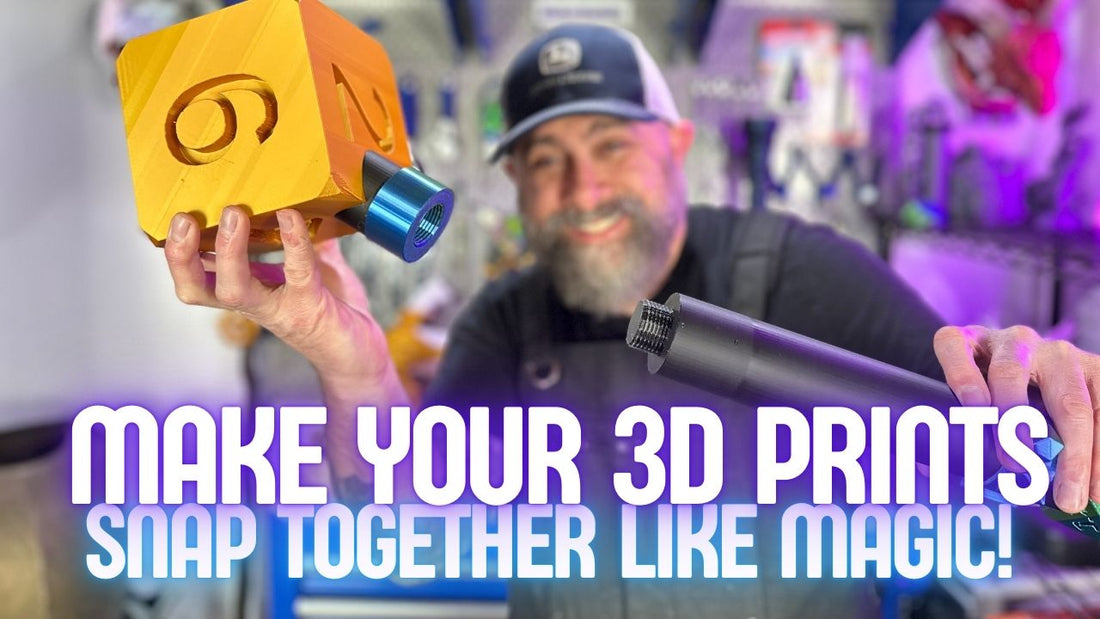When it comes to modular 3D prints, screw-together parts are one of my all-time favorite techniques. Whether you’re building cosplay props or designing housings for electronics, screw-together designs make assembly a breeze—no glue, no mess, just clean, reusable connections.
In this project, I’ll walk you through how to design your own screw-together parts using Tinkercad and Nomad Sculpt, and we’ll build something awesome along the way: a D&D-inspired modular mace.
Why Screw-Together Parts?
Screw-together parts are designed with internal and external threads—just like a nut and bolt, or a soda bottle cap. Here’s why they’re great:
• Perfect for large cosplay builds: Print in smaller sections, then assemble.
• Great for transport: Break down props for conventions or travel.
• No glue needed: Full mechanical connection with the option to take it apart later.
• Customizable: Swap out parts like handles or blades for different looks or effects.
Getting Started in Tinkercad
Tinkercad might be beginner-friendly, but it’s totally capable of generating threads for screw joints. And it’s free!
Step-by-Step:
1. Search “thread” in the shape library.
2. Select your thread and change the diameter to 30mm.
3. Set the rotations to 10 for a solid grip.
4. To make the female threaded part:
• Use a cylinder with 100 sides for smooth geometry.
• Set its diameter to 40mm so it fits over your 30mm screw.
5. Center the thread inside the cylinder and use the hole function to carve out the internal threading.
6. Duplicate the thread and make one a solid for the male part.

Designing in Nomad Sculpt
For more organic shapes—like our D&D mace—Nomad Sculpt shines.
Here’s how we do it:
1. Add a tube, then narrow it down.
2. Use the Spiral modifier and adjust the twist angle to get the number of rotations you want.
3. Slide the offset to widen the thread spacing.
4. Adjust the Profile B-Spline to shape the thread properly.
5. Add a cylinder to act as your screw base.
6. Combine the thread and cylinder using voxel remesh to make a solid screw.
7. Duplicate the screw, scale it up (about 2mm wider), and use it to punch a hole into another mesh using remesh.

Test Your Fit
Before you go full production, make sure to do a test print of both male and female threads. Different printers and materials have different tolerances. I usually allow for a 2mm difference when designing threads that will fit together on my Bambu Labs X1 Carbon.
Building the D&D Dice Mace
Using the same principles, I modeled a fantasy dice mace. The top has a hidden compartment for my favorite set of dice—because, let’s be real, no one touches my lucky D20. You could also hollow it out and throw in some LEDs if you’re feeling fancy.
Pro Tips
• Sand your threads if they’re too tight after printing.
• Always test-fit before painting—paint can clog the threads.
• Store or swap parts with ease using screw-together joints.
If you want the STL file or thread templates, I’ve linked them for free in the description. If you end up making your own D&D-inspired prop, tag me—I want to see it!
Free STL and Thread Templates Grab them here ➜ https://makerbuildit.com/products/3d-modeling-thread
Tools Used Tinkercad (Free browser-based CAD) - https://www.tinkercad.com/
Nomad Sculpt (iPad Sculpting App) - https://nomadsculpt.com/
3D Printer - https://amzn.to/3XNpSmt
PLA Filament - https://amzn.to/4i5mpXz
Silk PLA Filament - https://amzn.to/41X7OsG

